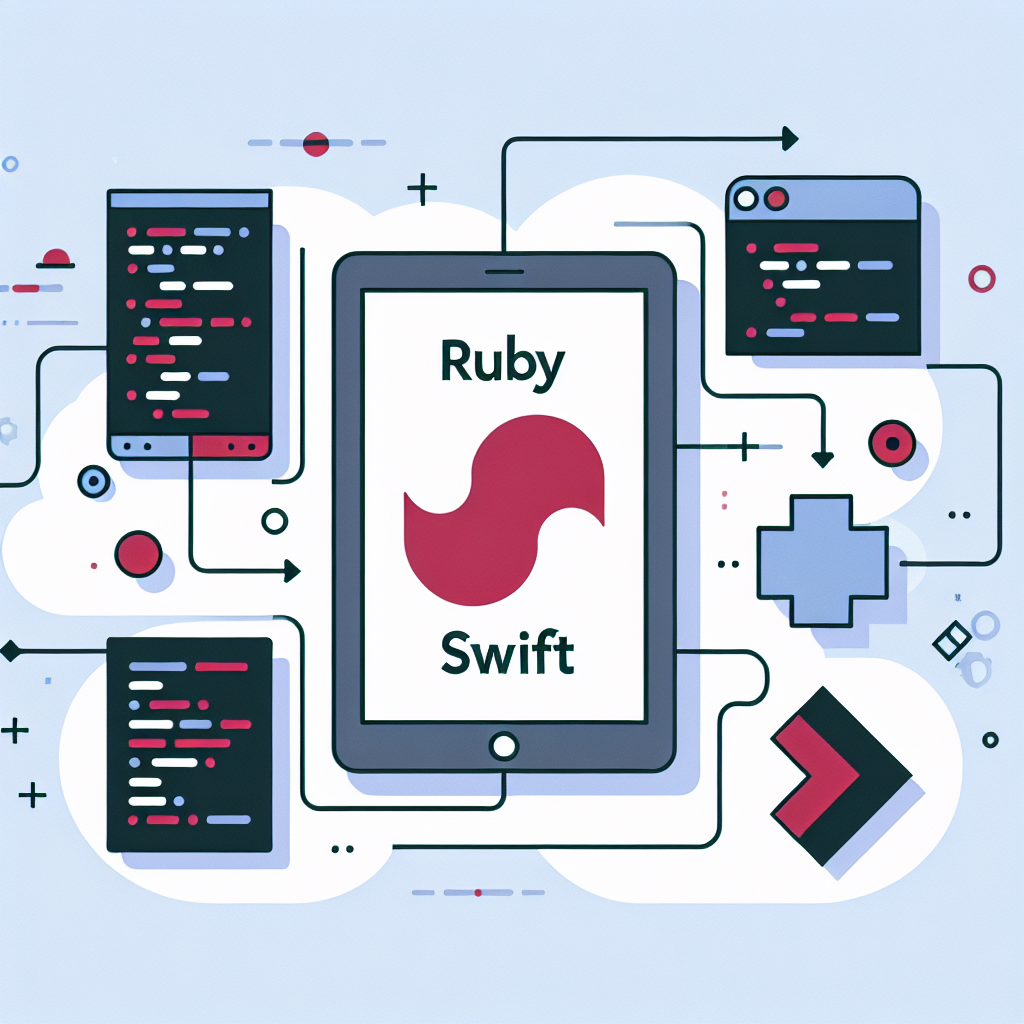Convert Ruby to Swift Easily | Ruby-to-Swift Tool
Easily convert Ruby code to Swift with our powerful tool. Streamline app development and boost productivity. Try the Ruby to Swift converter now!
Source Code
Converted Code
Output will appear here...
Transform your Ruby code to Swift seamlessly with our Ruby to Swift converter. Ideal for developers transitioning between platforms, this tool ensures efficient code migration, maintaining functionality and performance. Boost productivity and streamline your development process with accurate syntax conversion and optimized compatibility.

Ruby to Swift Conversion Tool Link to this section #
Effortlessly transition from Ruby to Swift with our innovative conversion tool, designed to streamline the process for developers aiming to adapt their codebases. Whether you're transitioning a project or exploring syntax differences, this tool caters to your needs by offering a seamless experience.
Key Features Link to this section #
- Syntax Transformation: Automatically converts Ruby syntax to Swift, ensuring a smooth transition between languages.
- Code Optimization: Offers optimized Swift code that maintains the functionality of the original Ruby script.
- Error Detection: Identifies potential errors during conversion, providing suggestions for immediate resolution.
Why Use This Tool? Link to this section #
- Time-Saving: Reduces manual effort by automating the conversion process, allowing you to focus on enhancing functionality rather than rewriting code.
- Cross-Platform Development: Facilitates the development of applications across different platforms by enabling code reuse.
- Learning Aid: Acts as an educational resource for developers looking to learn Swift by comparing syntax with Ruby.
Example Conversion Link to this section #
Ruby Code:
def greet(name)
puts "Hello, #{name}!"
end
greet("World")
Swift Equivalent:
func greet(name: String) {
print("Hello, \(name)!")
}
greet(name: "World")
Additional Resources Link to this section #
- Check out Apple's Swift Language Guide for comprehensive insights into Swift programming.
- Explore the Ruby Language Documentation for a deeper understanding of Ruby syntax and features.
Related Topics Link to this section #
- Language Interoperability
- Code Refactoring
- Automated Code Translation
Utilize the Ruby to Swift tool to enhance your development workflow, ensuring efficient and effective code transformation. Whether you're integrating Ruby scripts into Swift projects or learning a new language, this tool provides the support you need.
Frequently Asked Questions
What are the main differences between Ruby and Swift programming languages?
Ruby is a dynamic, interpreted language known for its simplicity and productivity, often used in web development with frameworks like Ruby on Rails. Swift is a compiled language developed by Apple, known for its safety, performance, and modern syntax, primarily used for iOS, macOS, watchOS, and tvOS app development.
Is it difficult to transition from Ruby to Swift?
Transitioning from Ruby to Swift can be challenging due to differences in syntax, language paradigms, and type systems. However, both languages emphasize clean and readable code, which can ease the learning curve. Developers familiar with object-oriented and functional programming concepts in Ruby can find similarities in Swift.
Can I use Ruby and Swift together in a project?
Yes, it is possible to use Ruby and Swift together in a project. Ruby can be used for server-side scripting or backend development, while Swift can be used for building the client-side application, especially for iOS or macOS. They can communicate through APIs or other integration methods.